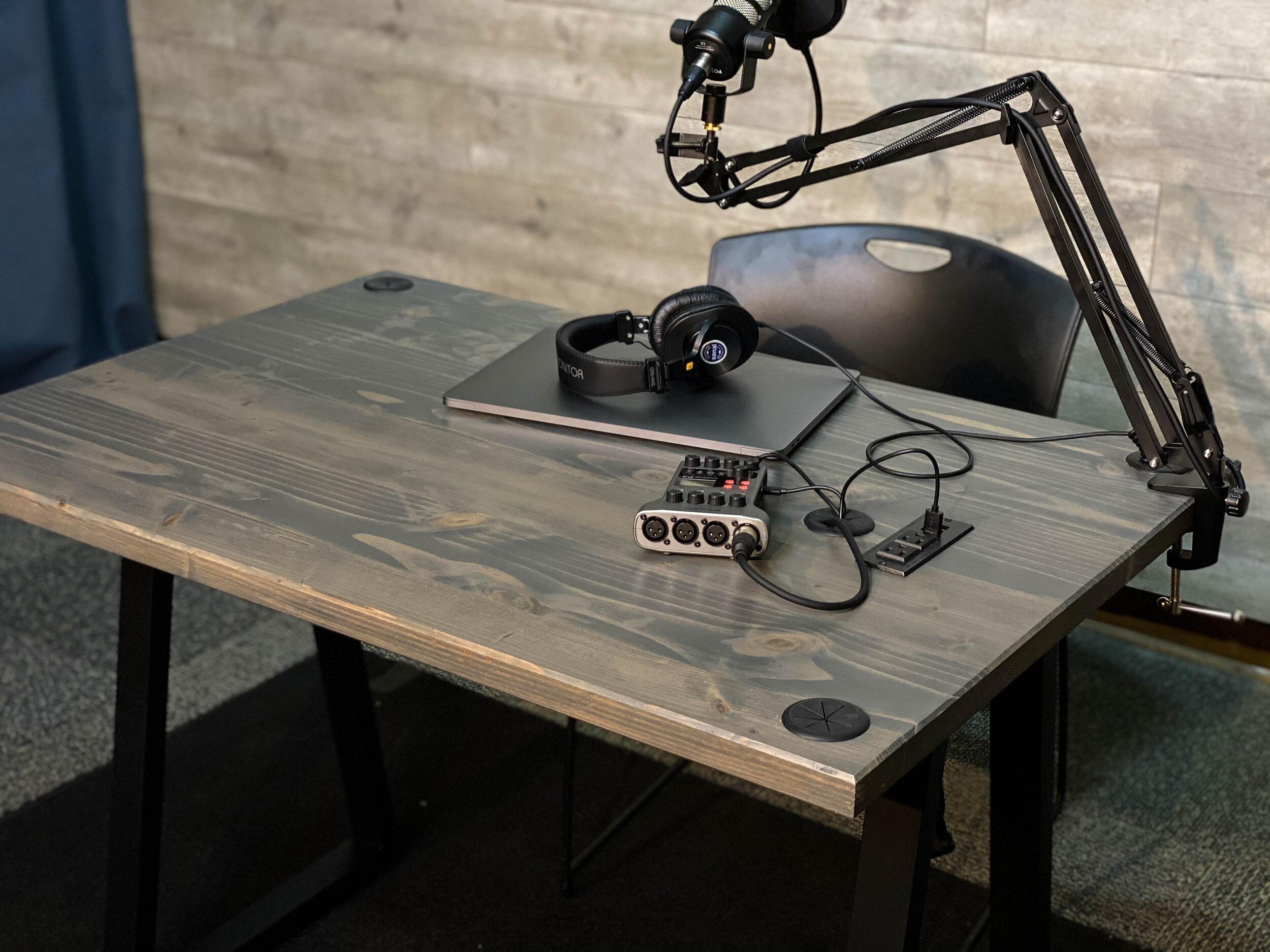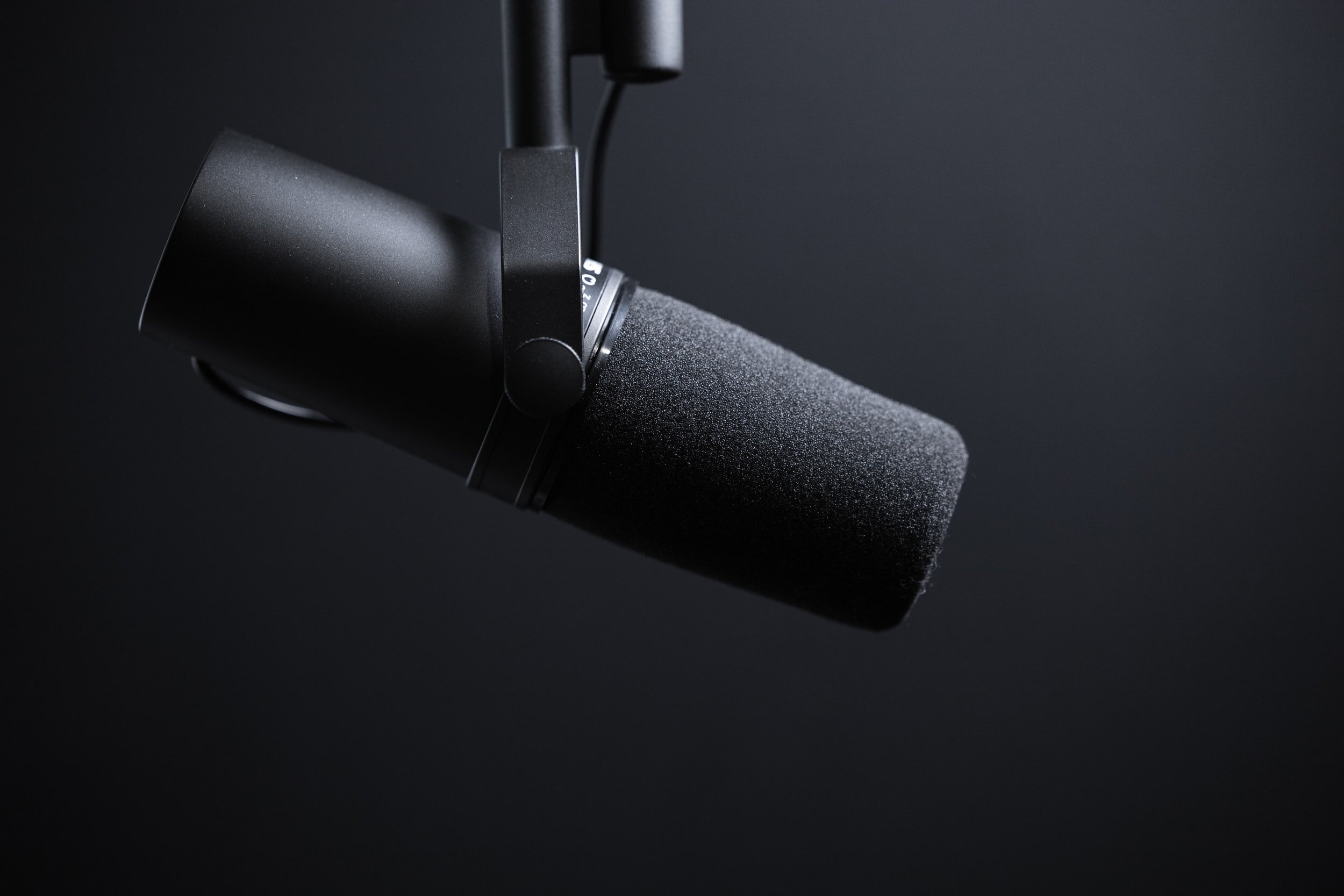
Best Podcast Equipment
For Beginners & Pros
You’re at the start of your podcasting journey — how exciting! No really, at this point the possibility is endless. We’re so excited for you. As a service to you, and born out of our passion for helping podcasters get started, we’ve put together this beginner podcast equipment guide to help you choose what’s best for your type of show, and your recording context.
As you navigate your purchasing decisions,
ask yourself two questions:
1) Can I afford this?
2) Does it do what I need it to do?

PODCAST MICS, MIXERS, & DIGITAL RECORDERS
You Deserve Equipment That Sounds Great!
We’ll do you the favor of only suggesting quality gear that we know is proven to give great audio results, given the proper settings and environment. Always feel free to email us if you have any questions.
XLR + USB Microphone Combos
If you’re looking for versatility with your podcasting microphones, consider an XLR/USB microphone combo. If needed, you’ll be able to switch between an XLR or USB input, allowing your mic to go from your laptop to your mixer. If you’re recording via Zoom or Skype, highly consider one of these mics.
One benefit to USB microphones is that they’re really user-friendly, and are the closest to a simply plug-and-play scenario.
ATR 2100x XLR + USB Microphone
Budget option: $99
Shure MV7 XLR + USB Microphone
Premium option: $249
XLR Microphones
XLR mics are the standard for vocal microphones. The two main types are called dynamic and condenser. Dynamic microphones do not require a power source, and condenser microphones require what is called “phantom power”.
In the spirit of keeping options minimal, we’re recommending a dynamic XLR microphone over condenser mics for podcasting. Dynamic XLR mics require a mixer or USB interface to record to a computer.
Shure SM58 XLR Microphone
Budget option: $99
Shure SM7b XLR Microphone
Premium option: $399
Digital Recorders
Digital audio recorders are compact, portable, and packed with features for podcasting. The Zoom P4 and the Zoom H6 are both equipped with 4 XLR channels and record to an SD card, making them an easy choice for podcasting. If you’re on the go or want to keep your setup simple, these will be great for you.
Both units are battery-powered using AA batteries, and also allow for external power scenarios. The Zoom P4 has a few more features than the H6, but the H6 is built to handle interchangeable microphone head capsules.
ZOOM P4 Digital Audio Recorder
Budget Option: $229
ZOOM H6 Digital Audio Recorder
Premium Option: $329
Audio Mixers
Analog sound mixers open up options for multiple inputs, outputs, and functionality. Pictured are two mixer options, both with XLR and 1/4” inputs for mics and various vocal options, as well as instruments. These mixers can take inputs from your computer, phone, and other electronics that produce sounds and music.
These mixers DO NOT have SD card recording options and require that you connect via USB cable to a computer and DAW (Digital Audio Workstation). Within your DAW, you arm your channels for recording. The ZEDi10 allows for 4 XLR inputs and will send multitrack to your DAW. The Soundcraft allows for 2 XLR inputs and will send both left and right tracks to your DAW.
Soundcraft Notepad 8 USB Mixer
Budget Option: $155
Allen & Heath ZEDi10 USB Mixer
Premium Option: $219
All-In-One Podcast Interfaces
It didn’t take long for audio equipment companies to realize the potential in the podcaster market. Rode came out the corner swinging with the Rode Rodecaster PRO console, followed by Zoom releasing the Livetrack L8 as a competitive all-in-one interface for podcasters. Both units have XLR inputs, multitrack recording via USB capabilities, on-board SD recording, on-board effects, build in sound pads, and multiple outputs for monitoring through headphones. Another feature widely used by podcasters is the ability to run a mix-minus for recording interviews via mobile phone and computer applications.
The main differences between the two are that the Rode Rodecaster PRO comes with built-in effects and user-friendly presets on each recording channel and has 4 XLR inputs. The Zoom L8 has 6 XLR inputs and requires more technical knowledge of mixers than the Rode, but it’s not difficult to learn and has a few advantages in our opinion. Functionality is key, and your decision should be based on the questions - “Can I afford it, and does it do what I need it to do?”
Zoom Livetrack L8 Podcast Interface
Budget Option $399
Rode Rodecaster PRO Interface
Premium Option $599
Needing Additional Help?
We consult!
Are you still needing help putting together your podcast setup? We consult with individuals and businesses to help sort out podcast and video equipment needs and within your budget.
Consulting starts at $75/hour, and can be in person in Wichita, Kansas and surrounding areas, or via Zoom.










